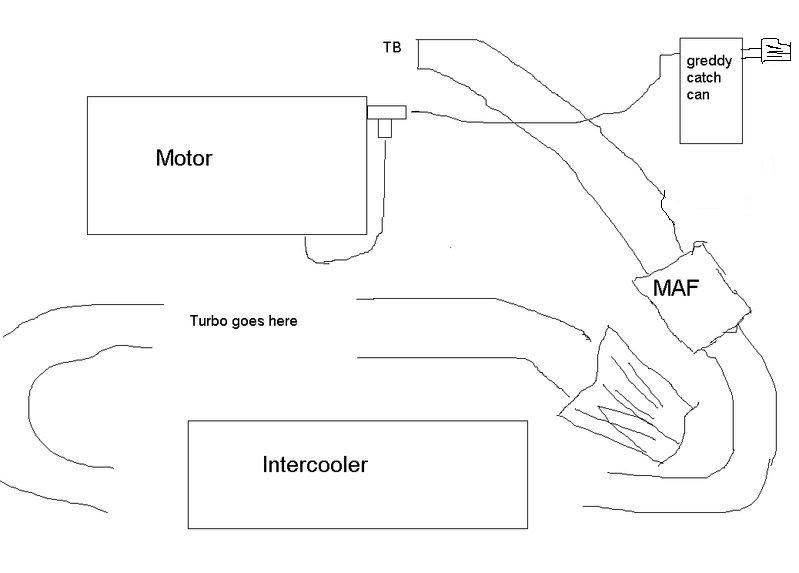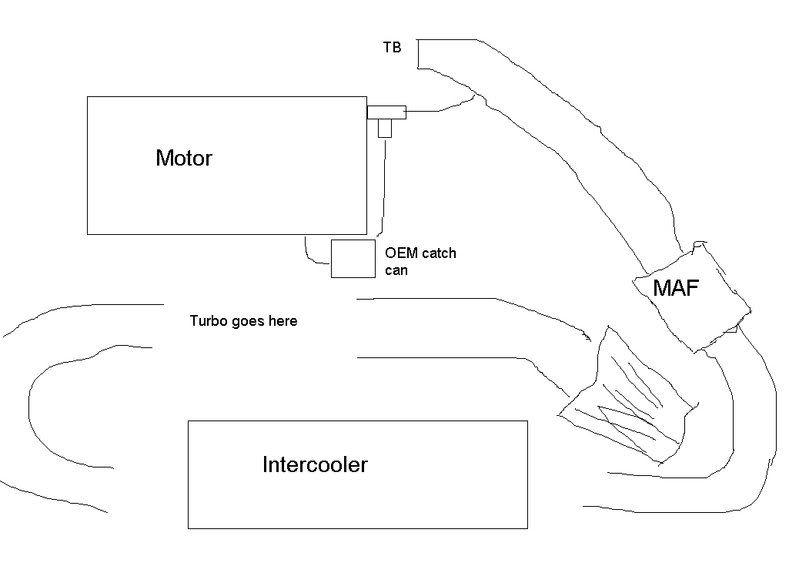
Originally Posted by
TeKKiE  ...
...
Vadim-
Your picture you show is bad for FI, IMO. You're compressing the crankcase with boost, in the setup you show. The PCV is supposed to prevent crankcase buildup, on N/A applications. When you hit boost, the PCV stays shut, not allowing any compression to be released, which in turn compresses the crankcase even further.
Good point, I didn't think about the turbo shoving the air and it trying to escape out of any hole possible...

Originally Posted by
Coheed  Pretty much no matter what, you are going to have a problem on a blow thru setup. It isn't that bad though, here's why.
Pretty much no matter what, you are going to have a problem on a blow thru setup. It isn't that bad though, here's why.
Metered air in the form of blow by gas is put back before the maf (into the intake before the turbo) and read again by the maf after the intercooler. This will cause a negligible change in AFR, because this air is normally blow by anyway. When at idle the VC is put under a vacuum by the pcv valve and it will suck in unmetered air from the intake pipe. Remember the intake pipe is placed before the maf right? This can cause a lean running idle (like what I have right now with just a breather on the vc). I can take the breather off and literally watch my afr drop from 17:1 to 15:1 just by plugging the hole the breather filter is on.
The ideal would be to place a one way valve that will flow lots of air in the hose that goes back to the intake. This will prevent the vc from sucking in air at idle, therefore, maintaining a perfect afr at idle as well.
Ohhh gotcha, that makes sense too now. I think I now understand why OEM setup has the VC breather going back to the intake too, this way the pressure will get sucked in with air going to the intake mani.
Now an idle FPR of 17:1 is not too bad right? Would actually give you better mpg's probably

Oh hmm, good idea on the clear hose, as long as it doesn't melt away haha.

Originally Posted by
jere  It would be better to have some kind of draw or vacuum where the breather side is. Also you will have to drain the watery oil that greddy can will fill up with and add oil to replace it
It would be better to have some kind of draw or vacuum where the breather side is. Also you will have to drain the watery oil that greddy can will fill up with and add oil to replace it
I think your better off just using the stock Oil separator, that way it just drains back to the crankcase, as Jere says it









 Be the first to like this post.
Be the first to like this post.


 )
)



 Back to top
Back to top
